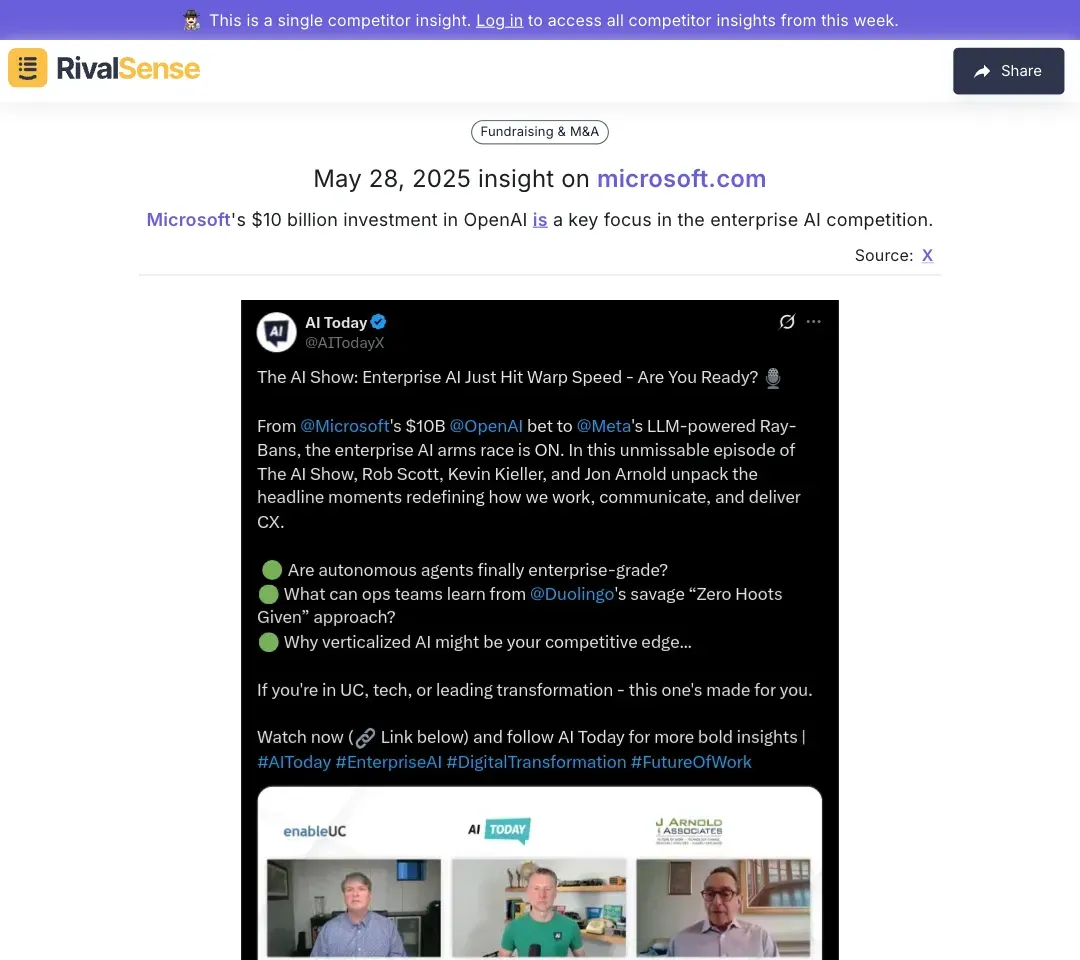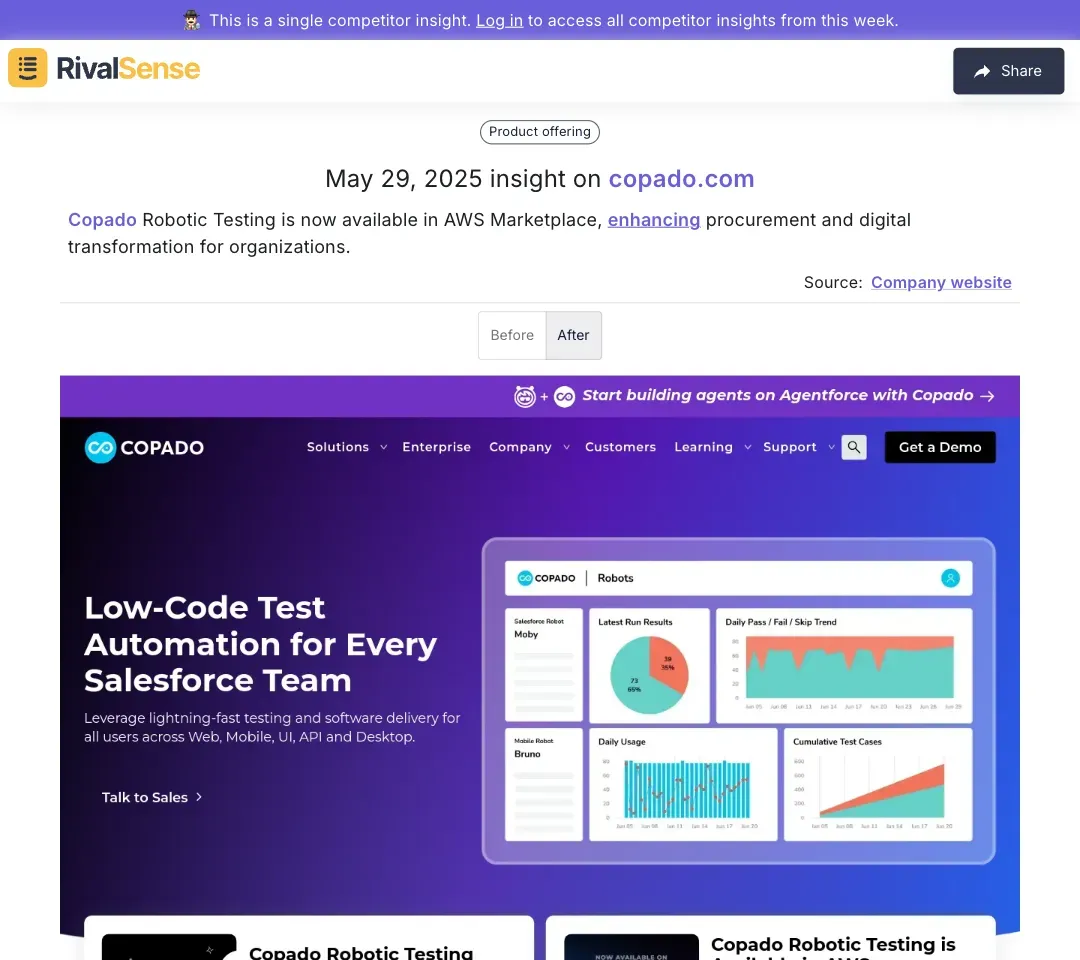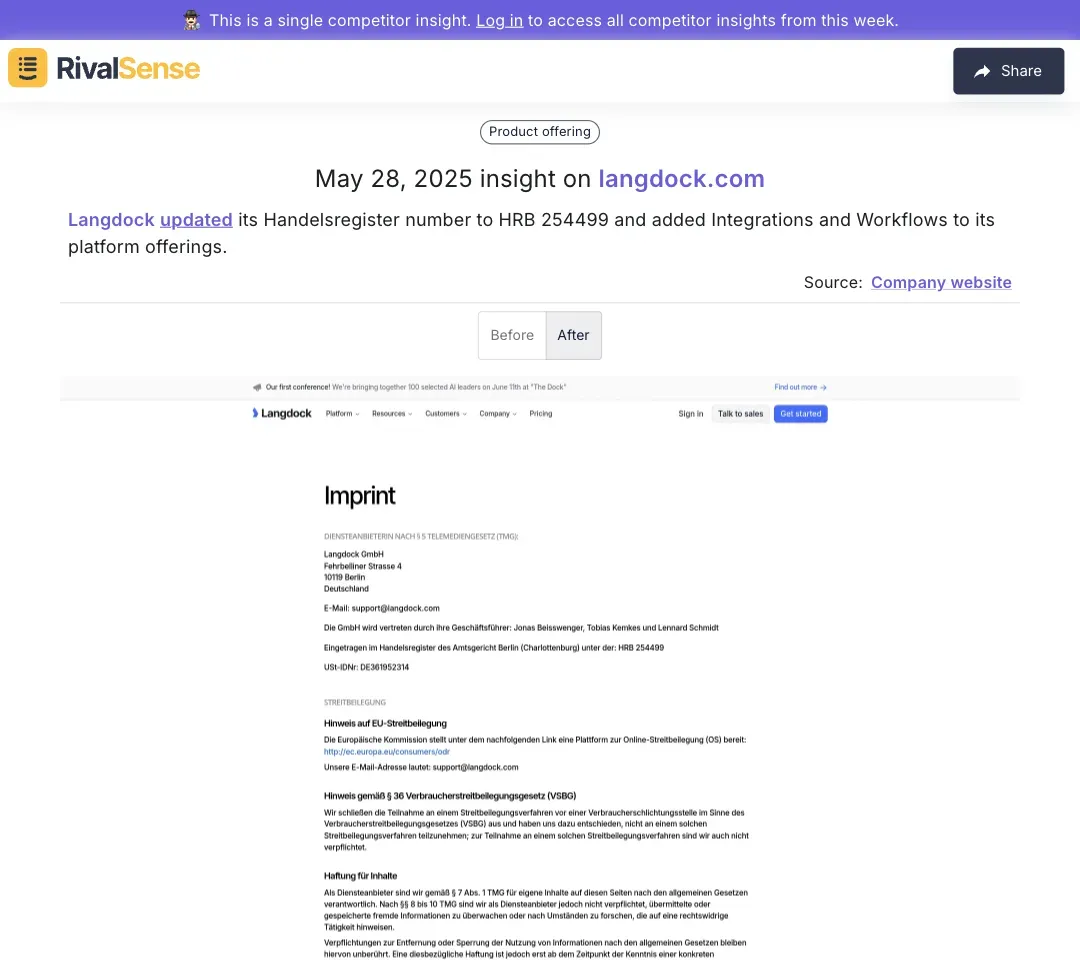Marketing vs. Business Strategy: How to Track Competitors Effectively
In the dynamic world of business, understanding your competitors is not just about keeping up—it's about staying ahead. The distinction between tracking a competitor's marketing strategy and their business strategy is crucial for any company aiming to carve out a competitive edge. While both strategies are intertwined, they serve different purposes and require different approaches to analysis. This blog post delves into these differences, offering practical insights into how businesses can leverage competitor tracking to gain strategic advantages.
Understanding the Difference
To effectively monitor competitors, it's essential to distinguish between their business and marketing strategies. Each requires a different lens and provides unique insights that can shape your own strategic decisions.
Business Strategy is the overarching plan that outlines how a company will achieve its long-term goals. It encompasses the company's mission, vision, value proposition, and the markets it chooses to compete in. Tracking a competitor's business strategy involves monitoring their overall direction, including expansions, mergers, acquisitions, and shifts in core offerings.
Marketing Strategy focuses on how a company communicates its value proposition to its target audience. It includes tactics used to attract and retain customers, such as advertising campaigns, social media engagement, content marketing, and pricing strategies. Tracking this means observing promotional activities, messaging, and customer engagement efforts.
Why Track Both?
Understanding both aspects provides a holistic view of your competitors' operations. This dual perspective allows you to connect the dots between their long-term direction and tactical market engagements. For instance, a competitor pivoting toward sustainability (business strategy) might launch marketing campaigns highlighting eco-friendly products. By tracking both, you can:
- Anticipate market shifts before they fully materialize
- Align your strategies to counter or capitalize on competitor moves
- Identify inconsistencies between their stated vision and execution
How RivalSense Can Help
RivalSense automates competitor tracking across 80+ sources like websites, social media, and registries. This comprehensive monitoring ensures you never miss critical updates affecting either strategy. Key tracking categories include:
- Product Launches/Updates → Signals business strategy shifts
- Pricing Updates → Reflects marketing tactics
- Event Participations & Partnerships → Indicates strategic focus areas
- Regulatory & Management Changes → Impacts long-term direction
- Media Mentions → Reveals marketing messaging effectiveness
Real-World Insights for Strategic Decisions
Competitor tracking tools like RivalSense transform raw data into actionable business intelligence. Here are actual examples showing how specific insights inform strategy:
Microsoft's $10B OpenAI Investment

This massive investment reveals Microsoft's business strategy to dominate enterprise AI. Tracking such capital allocations helps predict market consolidation and technological pivots, enabling you to adjust your own R&D or partnerships proactively.
Copado Robotic Testing on AWS Marketplace

Distribution channel expansions like this indicate business strategy shifts toward ecosystem growth. Monitoring these moves helps benchmark your market entry timelines and identify partnership opportunities.
Langdock's Registration & Platform Updates

Regulatory changes (HRB 254499) combined with new platform offerings signal business strategy evolution. Tracking these details helps anticipate scaling efforts or service diversification that could impact your market position.
Leveraging Insights for Competitive Advantage
The data collected through competitor tracking is only as valuable as the insights you draw from it. With consolidated weekly reports, businesses can:
✅ Identify Trends Early
Spot patterns in competitors' strategies to anticipate market movements before they peak.
✅ Benchmark Performance
Compare your execution speed and tactical approaches against industry players.
✅ Uncover White Space Opportunities
Detect gaps in competitors' strategies where your business can differentiate.
Conclusion
Distinguishing between marketing and business strategy tracking provides layered intelligence for informed decision-making. While marketing insights optimize campaigns, business strategy reveals fundamental shifts in competitive positioning. Tools like RivalSense simplify this complex monitoring by delivering curated insights directly to your inbox.
Ready to transform competitor data into strategic advantage? ➡️ Try RivalSense for free and get your first competitor report today!
📚 Read more
👉 Mastering Competitor Customer Success Analysis: A Step-by-Step Guide
👉 Advanced Tactics to Monitor SaaS & AI Competitive Threats
👉 How Jumio's Legal Move Reshaped Competitive Strategy in Digital Identity
👉 Data-Driven Insights on Advocacy Program Competitors Online
👉 Optimizing DevOps for Competitive Edge in Salesforce Development
